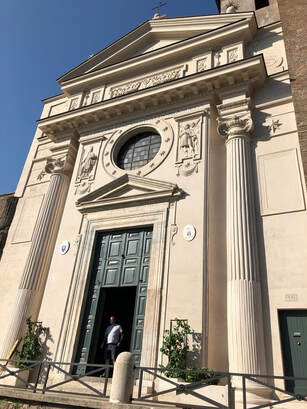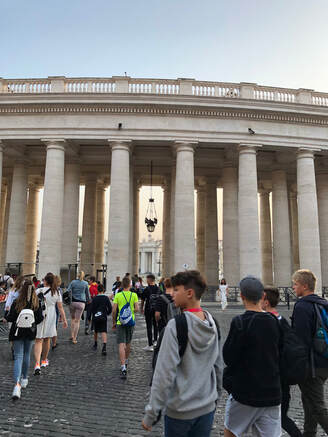
Praying for peace is what I did in Rome before going to Florence for the second week of my September solitary vacation. My original plan was to pray for peace and light a candle in as many of the Rome’s 900 churches as I could enter. Then I thought 100 would be a sensible number until I realized that 100 would catapult me into a frenzy, checking them off at the expense of being prayerful or even forgetting to pray before moving on to the next. It also became apparent that lighting a candle wasn’t always what I wanted to do with my budgeted coins. I don’t like paying to light an electronic ‘candle’, and sometimes I’d rather give to a homeless person who was virtually living on the church steps.
But before I go on, let me offer a few comments about this praying for peace idea. I am a Christian, a liberal one, who believes that God loves everyone and wants peace for everyone, and that Jesus’ teaches us to feed the hungry and welcome the stranger. I believe in prayer and it’s power, not only because I helps me but because it instills love and positive energy into the world. (Don’t ask me for proof or intellectual analysis, and I won’t ask you if the world needs peace.)
My action plan was simple: enter a church that I came upon during my walks, sit in the pew, and lift up love. No judgments, no conditions. Just pray for peace. Sometimes I would say the Lord’s Prayer, or light a candle. What were the results? Personally, I was more peaceful. I felt more loving and less annoyed or judgmental about situations that I encountered on my travels. On universal level, each time I left a church I felt more hopeful about the possibility of peace than when I had entered. If I don’t feel and act peaceful, if I don’t do my part, how can I have hope that anyone else will? Hmm, what if everyone in the world prayed for peace? We reap what we sow, individually and collectively.
Because of this prayer plan, I entered churches I might never have chosen to step foot in. But I am also a tourist, who enjoys art, architecture, and history. Every church I entered had an early church history and over the years each had been restored. In the late 16th century (after the Council of Trent, 1545-1563) and into the 17th century, when the Roman Papacy became powerful, the Baroque style captured most of the churches in Rome (Santa Maria sopra Minerva and the Pantheon being exceptions), with its curves, circles, sculpture. Interesting to note that this extremely embellished art form was in response to the Protestant Reformation, which among other things, protested the church’s sale of indulgences and other forms of materialism.
It could be said that if you’ve seen one baroque church in Rome, you’ve seen them all. Not true. Look and see.
Facades
Interiors
Paintings and Sculpture

I recalled a time ten or so years ago when I arrived at 10 and followed the crowd, found a seat and was one of the ‘thousands gathered at St. Peter’s Square’ when Pope Benedict said Mass, and was then driven around in this pope-mobile to bless us. This time I said a prayer and went on my way to Rome Termini.
 RSS Feed
RSS Feed